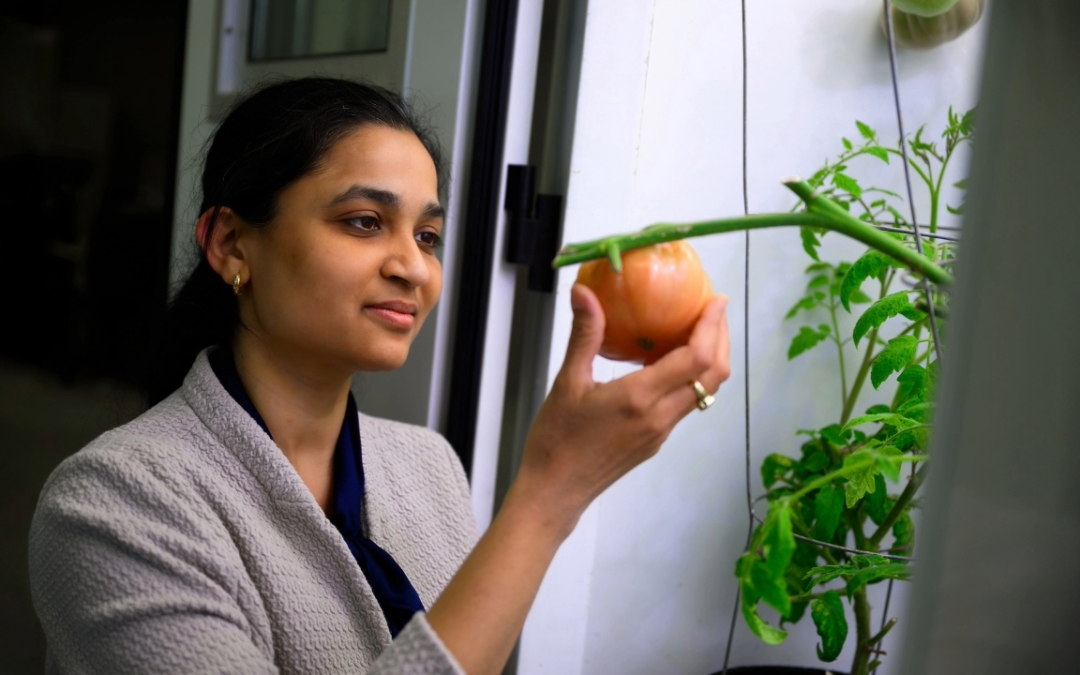
A free, online crop management tool designed to help cotton producers in Alabama and the Southeast get the upper hand on thrips, the region’s most consistent pests of seedling cotton, is now available to producers.
By JAMIE CREAMER
April 1 marked the launch of a free, online crop management tool designed to help cotton producers in Alabama and the Southeast get the upper hand on thrips, the region’s most consistent pests of seedling cotton.
Developed at North Carolina State University with input and site-development advice from Auburn entomology assistant professor Alana Jacobson and entomologists at Clemson and Georgia, the Thrips Infestation Predictor for Cotton tool integrates many years of weather, thrips-population and cotton-growing-pattern data from cotton fields in Alabama and across the Southeast to forecast when thrips infestations will be largest and risks of injury to young cotton plants highest.
Thrips feed on the foliage of seedling cotton, slowing plant and root growth, making the plants more susceptible to environmental stressors later in the growing season and reducing yields.
“By using the new, location-specific tool prior to planting, growers can see which fields are at the greatest risk of suffering thrips damage and be prepared to use more aggressive management strategies in those areas,” says Jacobson, an assistant professor who specializes in the biology and ecology of row-crop insect pests. “Or, they can decide to adjust the planting dates in those fields.”
The Thrips Infestation Predictor incorporates years of data from cotton-producing states in the Southeast to help determine conditions for potential thrips infestations and the risk of thrips injury to young cotton. Jacobson and Alabama extension entomologists Ron Smith and Tim Reed have collected such data from Alabama cotton fields and provided it to the tool-development team that’s led by George Kennedy, the NCSU entomologist under whose direction Jacobson completed her doctorate in entomology in 2012.
“This tool is based on many years of data collected from across the region, and it has proved accurate through years of testing,” Jacobson said. “It has performed great at my test sites here in Alabama, but we need feedback from users statewide to identify locations where the model’s predictions may not be accurate so that the model can be refined or updated. Producers’ input also will help us identify how to improve content and make it more user friendly.”
Because the weather, thrips populations and the timing of thrips’ dispersal from their overwintering hosts into cotton fields are extremely unpredictable from year to year, most farmers now use insecticides as preventive measures, applying the chemicals to seeds before planting, in furrows when they plant and over the top when the young plants are most susceptible to thrips damage. Jacobson said the new forecasting model will allow growers to identify the precise fields where intense scouting and monitoring and supplemental foliar sprays will be required.
Instead of making additional foliar applications over their entire crop, farmers can target the fields that need the more intense management, and that can help them cut production costs and save time,” Jacobson said.
In recent years, thrips in some cotton-producing areas have shown signs of resistance to the neonicotinoid insecticides commonly used for control. Last year, Jacobson collected thrips from cotton crops around the state and submitted them to NC State for analysis to determine the abundance and distribution of resistant populations.
“We have to figure out better ways to manage the pests, and the Thrips Infestation Predictor is a step in that direction,” Jacobson said. “Our goal is to minimize insecticide use, not only to prevent full-scale resistance but, more important, to use more sustainable production methods and help producers operate more efficiently, effectively and profitably.”
The Thrips Infestation Predictor for Cotton can be found online at http://climate.ncsu.edu/cottonthripsrisk/. Producers can learn more about how the tool was developed and the principles behind it in this webinar.




